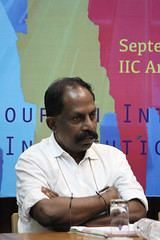
By Zhanna Krupnikov
A home equity line of credit (or HELOC) is a loan with a maximum amount fixed where the collateral is the borrower’s equity in his/her house.
Home equity is the difference between the value owed on a home and the value of the worth of the home. This amount of equity established on your home will determine the credit limit you receive on a HELOC.
Unlike a home equity loan where an entire sum is advanced at once, HELOC is a line of credit allowing you to withdraw over a period of time, subject to the maximum limit fixed.
How does Home Equity Line of Credit work?
To be eligible for a HELOC, your payments must be up-to-date and you must have a good credit standing. Since this is a line of credit based on your home equity, you must have a substantial amount of equity standing in your home.
With the open line of credit under HELOC, you can borrow and repay as per your requirements as long as you do not exceed the credit limit. Note that, HELOC comes only with a variable interest rate, which is based on prevailing prime rates. Also, the repayment of this type of line of credit is extremely flexible.
The advantages of Home Equity Line of Credit
1.Unlike home equity loans, HELOC do not require renewal as long as the credit limit is remaining.
2.If your home equity grows, whether by an increase in your property value or a reduction in your mortgage debt, you can ask for your maximum credit limit to be recalculated.
3.The interest on HELOC is tax deductible.
4.A HELOC does not attract weary views from creditor or impact your credit ranking negatively as a second mortgage may.
Watch out for the following:
1.However, since the interest rate on home equity line of credit is variable, keep a tab on the prevailing interest rates. Even the smallest spike can cause your repayment balances to rise rapidly.
2.Also, since home equity line of credit is secured against your house, any default in repayment can result in foreclosure.
Thus, it is advisable to consult a lending professional agent before taking up home equity line of credit. This type of financing should be considered carefully, and the homeowner must read all the fine print and discuss all fees before securing such a loan, since you could lose your home if you fail to repay the amount borrowed. Home equity is the difference between the value owed on a home and the value of the worth of the home. This amount of equity established on your home will determine the credit limit you receive on a HELOC.
Unlike a home equity loan where an entire sum is advanced at once, HELOC is a line of credit allowing you to withdraw over a period of time, subject to the maximum limit fixed.
For more information, you may contact:
Allegro Mortgages Corp. – Best Broker for All Your Financing Requirements (416) 987-0008
Check out amortgages.ca for more information on different refinancing options.
About the Author: Please visit the website Amortgages.ca if you are interested to learn more about home equity line of credit. The website also provides information on mortgages Concord and best mortgage rate Thornhill.
Source: isnare.com
Permanent Link: isnare.com/?aid=577818&ca=Finances